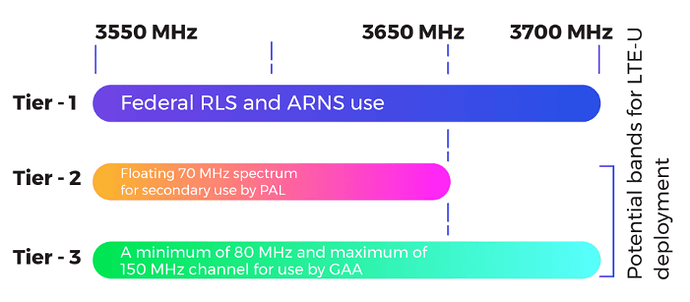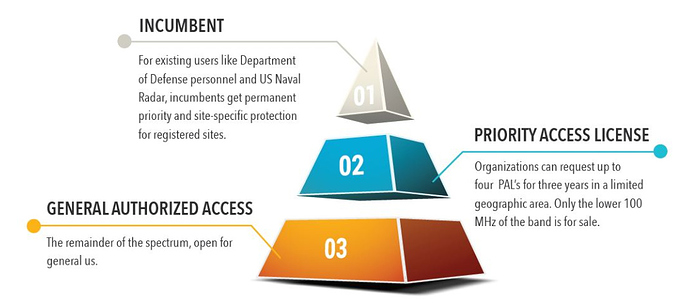It is also worth to know the concept on how CBRS is sctructured.
As you said, part of CBRS’ infrastructure is built through the Spectrum Access System (SAS). This system makes the three-tiered spectrum-sharing framework the FCC adopted for CBRS a possibility.
The three tiers of CBRS spectrum use are:
• Incumbent: for existing users like Department of Defense personnel and US Naval Radar, incumbents get permanent priority and site-specific protection for registered sites.
• Priority Access License (PAL): for organizations that pay a fee for use. Organizations can request up to four PAL’s for three years in a limited geographic area. Only the lower 100 MHz of the band is for sale.
• General Authorized Access (GAA): the remainder of the spectrum, open for general use.
SAS is a coordinator within the CBRS 3.5 GHz band and works to shield the higher-tier users from lower tier users and optimizes efficient use of the available spectrum in the band for all users. The system also has a record of all CBRS radio base stations with information such as the stations’ tier status, location and whatever other details needed to coordinate frequency, transmit power assignments and keep an eye and protect the band from interference. Currently at least 80 MHz of the 150 MHz spectrum must be available for GAA use, according to FCC rules. Exceptions can be made if no Incumbents are present. Sometimes all of the 150 MHz could be available if neither Incumbents nor Priority Access Users are in the area.

